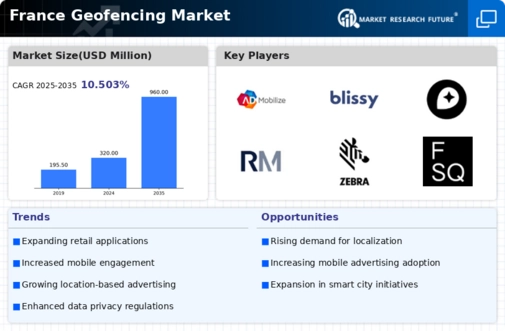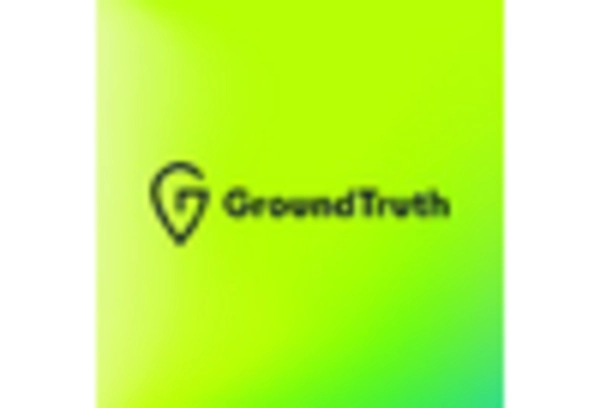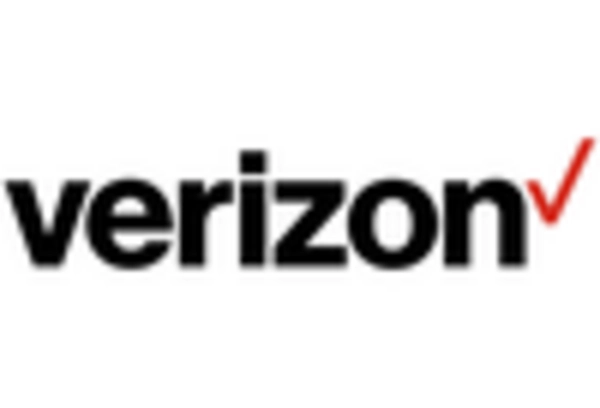The geofencing market exhibits a dynamic competitive landscape, characterized by rapid technological advancements and increasing adoption across various sectors. Key growth drivers include the rising demand for location-based services, enhanced customer engagement strategies, and the proliferation of mobile devices. Major players such as Google LLC (US), Apple Inc. (US), and Verizon Communications Inc. (US) are strategically positioned to leverage their technological prowess and extensive user bases. Google LLC (US) focuses on integrating geofencing capabilities into its advertising platforms, enhancing targeted marketing efforts. Meanwhile, Apple Inc. (US) emphasizes privacy-centric geofencing solutions, appealing to consumers' growing concerns over data security. Verizon Communications Inc. (US) is investing in infrastructure to support real-time data analytics, thereby improving service delivery and customer experience. Collectively, these strategies shape a competitive environment that prioritizes innovation and user-centric solutions.
In terms of business tactics, companies are increasingly localizing their operations and optimizing supply chains to enhance responsiveness to market demands. The competitive structure of the geofencing market appears moderately fragmented, with several players vying for market share. However, the influence of key players is substantial, as they set industry standards and drive technological advancements. This competitive interplay fosters an environment where smaller firms may struggle to keep pace, yet also encourages collaboration and partnerships among various stakeholders.
In October 2025, Google LLC (US) announced the launch of its new geofencing API, designed to enhance location-based marketing capabilities for businesses. This strategic move is significant as it allows advertisers to create more personalized and contextually relevant campaigns, potentially increasing engagement rates and return on investment. By providing developers with advanced tools, Google positions itself as a leader in the geofencing space, further solidifying its market dominance.
In September 2025, Apple Inc. (US) unveiled a new feature within its Maps application that enhances geofencing capabilities for retail businesses. This initiative is crucial as it enables retailers to send targeted notifications to customers when they are in proximity to their stores, thereby driving foot traffic and sales. Apple's focus on privacy and user consent in this feature may also resonate well with consumers, reinforcing brand loyalty and trust.
In August 2025, Verizon Communications Inc. (US) expanded its partnership with GroundTruth Inc. (US) to enhance location-based advertising solutions. This collaboration is strategically important as it combines Verizon's extensive network capabilities with GroundTruth's geolocation data, enabling more accurate targeting and measurement of advertising effectiveness. Such partnerships illustrate the trend towards integrated solutions that leverage the strengths of multiple players in the market.
As of November 2025, current competitive trends in the geofencing market include a strong emphasis on digitalization, sustainability, and the integration of artificial intelligence (AI) into geofencing solutions. Strategic alliances are increasingly shaping the landscape, as companies recognize the value of collaboration in driving innovation. Looking ahead, competitive differentiation is likely to evolve, with a shift from price-based competition towards a focus on technological innovation, enhanced customer experiences, and supply chain reliability. This transition underscores the importance of agility and adaptability in a rapidly changing market.

















Leave a Comment